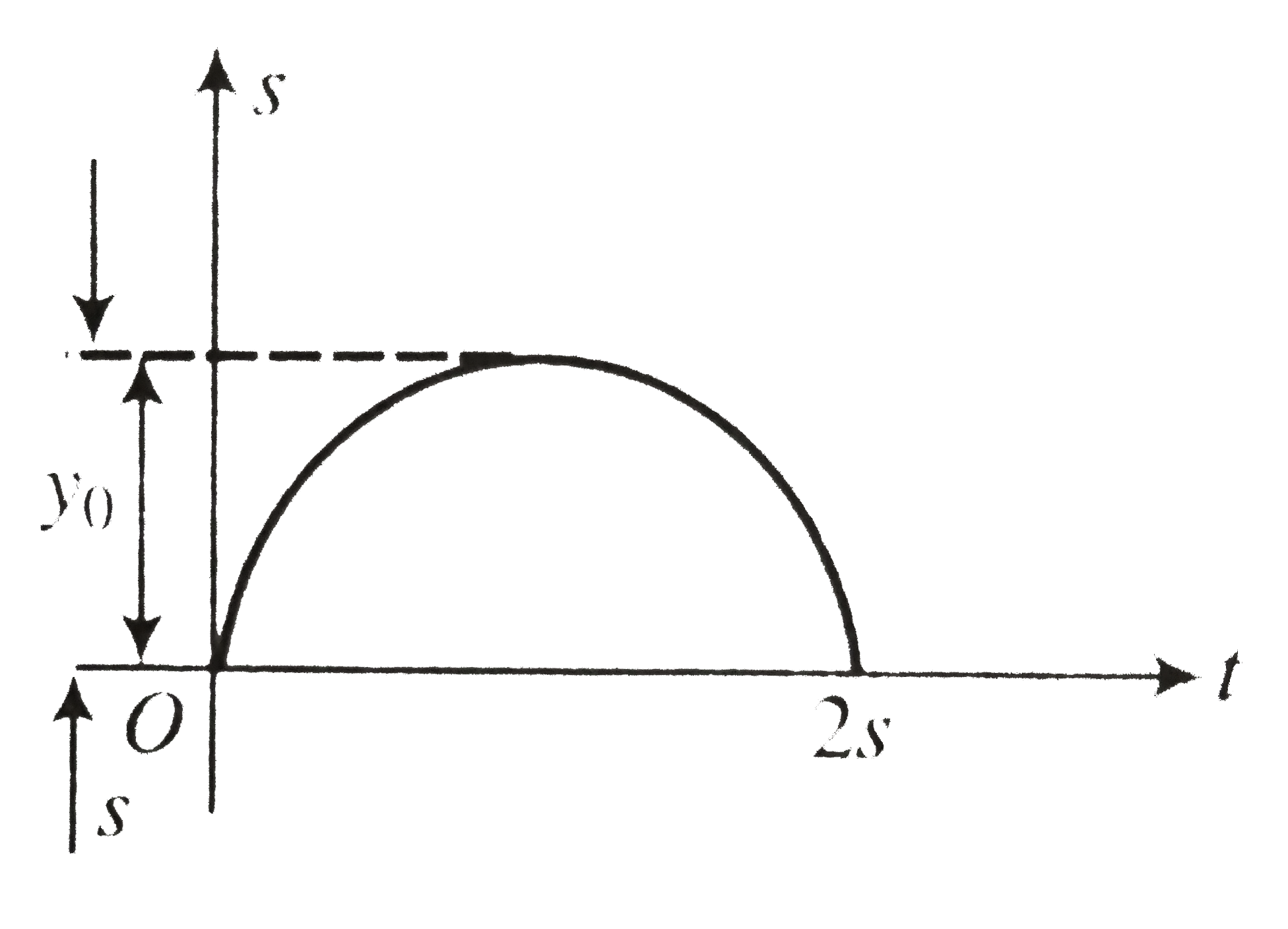A particle performs SHM with a period T and amplitude a. The mean velocity of the particle over the time interval during which it travels a distance a2 from the extreme position is xa2T. Find the value of x.
The correct Answer is:6
To solve the problem, we need to find the value of x in the expression for the mean velocity of a particle performing simple harmonic motion (SHM). The mean velocity is given as xa2T, where T is the period of the motion and a is the amplitude.
1. Understanding the Motion:
- The particle starts at the extreme position (maximum displacement) at t=0.
- The equation of motion for SHM can be expressed as:
x(t)=acos(ωt)
- Here, ω=2πT.
2. Determine the Displacement:
- The particle travels a distance of a2 from the extreme position.
- If the particle starts at a (extreme position), after traveling a2, its new position will be:
x=a−a2=a2
3. Finding the Time Taken:
- Set the displacement equal to a2:
a2=acos(ωt)
- Dividing both sides by a:
12=cos(ωt)
- From the cosine function, we know:
ωt=π3(since cos(π3)=12)
- Therefore, the time t can be expressed as:
t=π3ω
4. Calculating the Mean Velocity:
- The mean velocity vavg is defined as the total distance traveled divided by the total time taken:
vavg=Total DistanceTotal Time=a2t
- Substituting t:
vavg=a2π3ω=a2⋅3ωπ=3aω2π
5. Relating ω to the Period T:
- Recall that ω=2πT:
vavg=3a⋅2πT2π=3aT
6. Equating to the Given Mean Velocity:
- We are given that the mean velocity is also expressed as:
vavg=xa2T
- Setting the two expressions for mean velocity equal to each other:
3aT=xa2T
- Canceling a and T (assuming a≠0 and T≠0):
3=x2
- Solving for x:
x=6
Final Answer:
The value of x is 6.
- The particle starts at the extreme position (maximum displacement) at t=0.
- The equation of motion for SHM can be expressed as:
x(t)=acos(ωt)
- Here, ω=2πT.
- The particle travels a distance of a2 from the extreme position.
- If the particle starts at a (extreme position), after traveling a2, its new position will be:
x=a−a2=a2
- Set the displacement equal to a2:
a2=acos(ωt)
- Dividing both sides by a:
12=cos(ωt)
- From the cosine function, we know:
ωt=π3(since cos(π3)=12)
- Therefore, the time t can be expressed as:
t=π3ω
- The mean velocity vavg is defined as the total distance traveled divided by the total time taken:
vavg=Total DistanceTotal Time=a2t
- Substituting t:
vavg=a2π3ω=a2⋅3ωπ=3aω2π
- Recall that ω=2πT:
vavg=3a⋅2πT2π=3aT
- We are given that the mean velocity is also expressed as:
vavg=xa2T
- Setting the two expressions for mean velocity equal to each other:
3aT=xa2T
- Canceling a and T (assuming a≠0 and T≠0):
3=x2
- Solving for x:
x=6
The value of x is 6.
Topper's Solved these Questions
- SIMPLE HARMONIC MOTIONBOOK - DC PANDEY ENGLISHCHAPTER - SIMPLE HARMONIC MOTIONEXERCISE - Matrix matching type questions
13 Videos
- SEMICONDUCTORS AND ELECTRONIC DEVICESBOOK - DC PANDEY ENGLISHCHAPTER - SEMICONDUCTORS AND ELECTRONIC DEVICESEXERCISE - More than One Option is Correct
3 Videos
- SOLVD PAPERS 2017 NEET, AIIMS & JIPMERBOOK - DC PANDEY ENGLISHCHAPTER - SOLVD PAPERS 2017 NEET, AIIMS & JIPMEREXERCISE - Solved paper 2018(JIPMER)
38 Videos
Similar Questions
A particle performs SHM with a period T and amplitude a. The mean velocity of particle over the time interval during which it travels a/2 from the extreme position is
View SolutionA particle executes SHM with time period T and amplitude A. The maximum possible average velocity in time T/4 is-
View Solution
Knowledge Check
A particle executing SHM with time period T and amplitude A. The mean velocity of the particle averaged over quarter oscillation, is
AA4TB2ATC3ATD4AT
A paricle performs S.H.M. with time period T. The time taken by the particle to move from hall the amplitude to the maximum dispalcement is T2
View SolutionA particle performs SHM on x- axis with amplitude A and time period period T .The time taken by the particle to travel a distance A/5 string from rest is
View SolutionA particle performs SHM on x- axis with amplitude A and time period period T .The time taken by the particle to travel a distance A/5 starting from rest is
View SolutionA particle moves rectilinearly possessing a parabolic s-t graph. Find the average velocity of the particle over a time interval from t=12s→t=1.5s.

View SolutionA particle is performing SHM of amplitude 'A' and time period 'T'. Find the time taken by the particle to go from 0→A/2.
View SolutionA particle performs SHM in a straight line. In the first second, starting from rest, it travels a distance a and in the next second it travels a distance b in the same side of mean position. The amplitude of the SHM is
View SolutionA particle performing SHM with amplitude 10cm. At What distance from mean position the kinetic energy of the particle is thrice of its potential energy ?
View Solution
